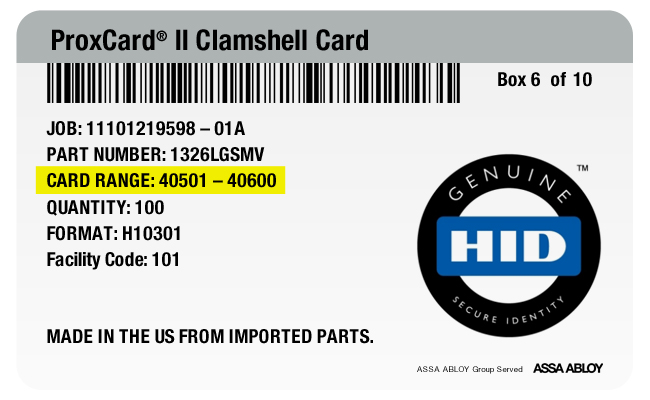Every prox card has a unique card ID number, called a sequence number or range number. You cannot repeat sequence numbers, since duplicate cards will not work.
How Sequence Numbers Work
The card’s sequence or range number is programmed into it along with the facility code. The combination of both numbers are what tells a card reader which cards have access to the building – both the facility code and sequence number must match for the card to work.
Because of this, it is incredibly important that cards do not have the same sequence number; because they have the same facility code and sequence number, the system cannot tell the cards apart. When you order new cards, order the cards in the next range of numbers.
For example, if your current box of cards ends with sequence number 120, your next cards should start with sequence number 121.
For most card formats, your card range is numbers between zero and 65,535.
If you aren’t sure what your card sequence is, or what your last order’s card range was, that information will be on the box. You can also look at your access control software to see which numbers have already been assigned in the system.
What if I Need a Large Number of Cards?
If your organization needs a large number of cards, you have several options.
First, you can set up your system to use more than once facility code. This would require card readers than are compatible with more than one facility code. Using this method, you could have the full range of zero to 65,535 under each facility code. The cards would not be identical because their facility code AND sequence numbers do not match.
Second, you can register your cards with programs like Corporate 1000 from HID or Cardtrax from Allegion. These programs allow you a greater range of card numbers, up to 34,359,738,367. They also store your card information, making it easy to order the next set without duplicating cards.


